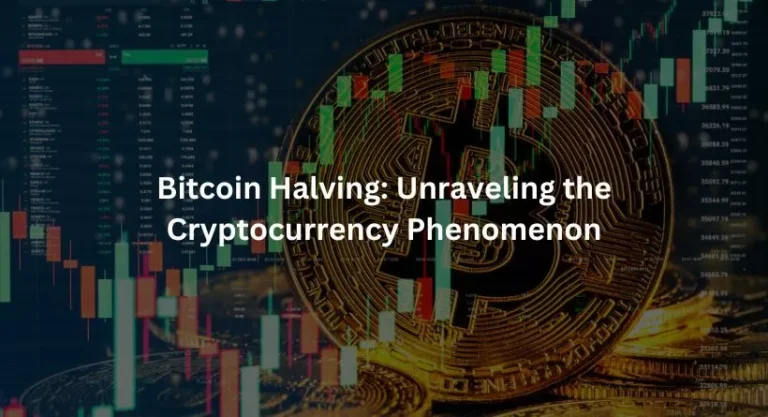In the world of cryptocurrencies, Bitcoin stands tall as the pioneer, the trendsetter, and the game-changer. It has captured the imagination of investors, technophiles, and the curious alike. One of the most intriguing aspects of Bitcoin is the concept of “Bitcoin Halving.” It has a big effect on Bitcoin price. This phenomenon has a profound impact on the Bitcoin ecosystem, affecting everything from supply dynamics to miner rewards. In this article, we’ll delve deep into Bitcoin Halving, exploring what it is, why it matters, and its implications for the future.
Understanding Bitcoin Halving
Bitcoin operates on a deflationary model, and its total supply is capped at 21 million coins. Unlike traditional currencies subject to inflation due to central bank policies, Bitcoin is designed to become scarcer over time. Bitcoin Halving is a fundamental event that occurs approximately every four years, cutting the rate at which new Bitcoins are created in half. To grasp the significance of this event, let’s break it down:
The Mechanics of Bitcoin Halving
- Block Production: Bitcoin transactions are grouped into blocks, and miners compete to solve complex mathematical puzzles to add these blocks to the blockchain.
- Mining Rewards: Miners are rewarded with newly created Bitcoins (block rewards) and transaction fees for their efforts.
- Halving Event: Every 210,000 blocks (approximately four years), the block reward is halved. Initially set at 50 Bitcoins per block, it reduced to 25 in the first halving, then 12.5 in the second, and so on.
The most recent Bitcoin Halving occurred in May 2020 when the block reward dropped from 12.5 to 6.25 Bitcoins per block.
Why Does Bitcoin Halving Matter?
- Supply Scarcity: Bitcoin Halving reinforces the scarcity of the cryptocurrency. With a decreasing issuance rate, it becomes progressively harder to mine new Bitcoins, making each one more valuable.
- Price Impact: Historical data shows that Bitcoin’s price tends to rise following halving events. The reduced supply growth often leads to increased demand, driving up the price.
- Miner Dynamics: Halving events significantly affect Bitcoin miners. They must adapt to reduced rewards or improve mining efficiency to remain profitable. This competition can lead to innovation in mining technologies.
Bitcoin Halving 2024: What to Expect
Bitcoin’s price often surges after halving events. The reduced supply growth can drive demand, impacting its price. As Bitcoin Halving 2024 approaches, here are key expectations:
- Increased Scarcity: With each halving, Bitcoin becomes scarcer, potentially enhancing its store-of-value appeal.
- Price Volatility: Halving events can lead to price spikes and increased volatility, providing trading opportunities.
- Mining Innovation: Miners adapt to reduced rewards, spurring innovation in mining technologies.
- Market Maturation: Bitcoin’s reputation as “digital gold” may attract more institutional investors.
Bitcoin Halving 2024 and Its Impact on Bitcoin Price
Bitcoin’s price history following halving events has garnered attention. The reduced supply growth combined with heightened demand has historically led to price surges. While past performance is not indicative of future results, Bitcoin’s limited supply remains a key driver.
Conclusion
Bitcoin Halving is a fundamental aspect of the cryptocurrency’s design, shaping its supply, demand, and ecosystem. As we move into an era where the remaining Bitcoins become harder to mine, the implications for Bitcoin’s value and role in the financial world are profound. Investors and enthusiasts alike will be keenly watching the next halving event, expected around 2024, as Bitcoin continues to evolve and surprise the world.







